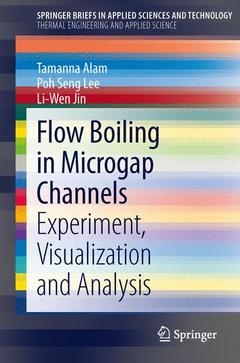Description
Flow Boiling in Microgap Channels, 2014
Experiment, Visualization and Analysis
SpringerBriefs in Thermal Engineering and Applied Science Series
Authors: Alam Tamanna, Lee Poh Seng, Jin Liwen
Language: English
Subjects for Flow Boiling in Microgap Channels:
52.74 €
In Print (Delivery period: 15 days).
Add to cart84 p. · 15.5x23.5 cm · Paperback
Description
/li>Contents
/li>Comment
/li>
Introduction.- Design and Operating Parameters.- Characteristics of Two-Phase Flow Boiling in Microgap Channel.- Comparison of Flow Boiling Characteristics between Microgap and Microchannel.- Optimization of Microgap Channel Dimension and Operating Condition.- Surface Roughness Effect on Microgap Channel.- Two-Phase Microgap Channel in Mitigating Flow Instabilities and Flow Reversal.- Two-Phase Microgap Channel Cooling Technology for Hotspots Mitigation.- Conclusions and Recommendations.- Appendix A: Uncertainty Analysis for Experimental Data.- Appendix B: Nomenclature.- Appendix C: Data Reduction.
Provides detailed experimental and visualization studies for microgap, together with some prediction methods for flow regime map
Explains the unique confined boiling and consequent heat transfer mechanism in microgap channel
Evaluates effects of surface roughness and gap dimension on boiling behavior




